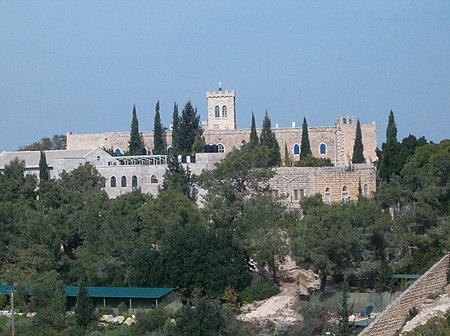Beit Jimal
Buildings and structures in Jerusalem DistrictByzantine church buildings in IsraelRoman Catholic monasteries in IsraelSalesian monasteries

Beit Jimal (or Beit Jamal; Hebrew: בית ג'מאל; Arabic: بيت جمال / الحكمة), Beit el Jemâl, meaning "The house of the camel" is a Catholic monastery run by Salesian priests and brothers near Beit Shemesh, Israel. The Christian tradition identifies the site with the Roman- and Byzantine-era Jewish village of Caphargamala (כפר גמלא), and believe that a cave there is the tomb of St. Stephen or to have conserved his relics. An alternative spelling and etymology for the name is therefore Beit Gemal or Beit Gamal - the House of Rabban Gamaliel the Elder.
Excerpt from the Wikipedia article Beit Jimal (License: CC BY-SA 3.0, Authors, Images).Beit Jimal
HaRav Yisra'el Grosman, Beit Shemesh Ramat Avraham
Geographical coordinates (GPS) Address External links Nearby Places Show on map
Geographical coordinates (GPS)
| Latitude | Longitude |
|---|---|
| N 31.725 ° | E 34.976388888889 ° |
Address
بيت جمال
HaRav Yisra'el Grosman
9920828 Beit Shemesh, Ramat Avraham
Jerusalem District, Israel
Open on Google Maps








